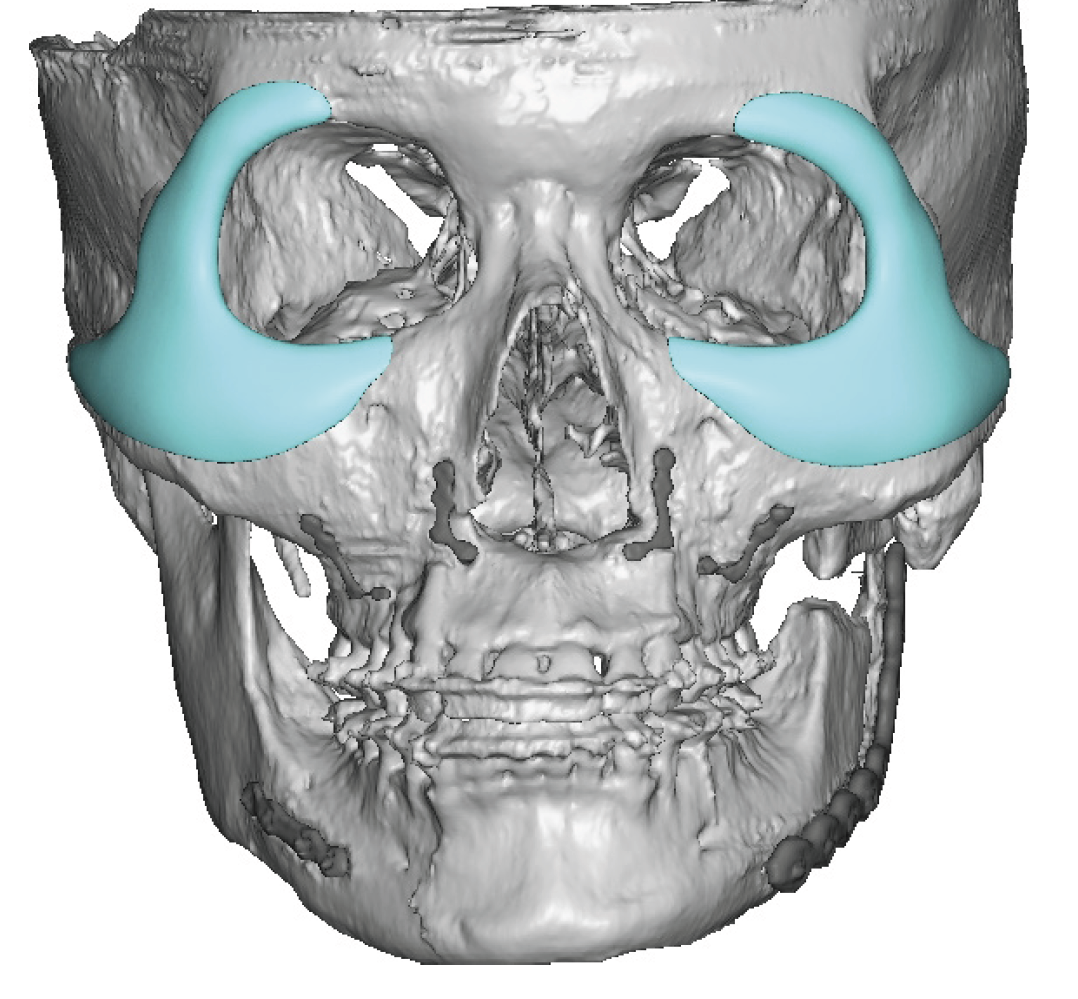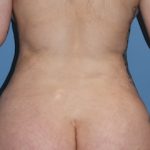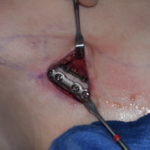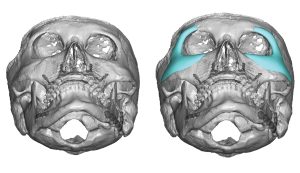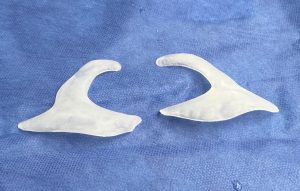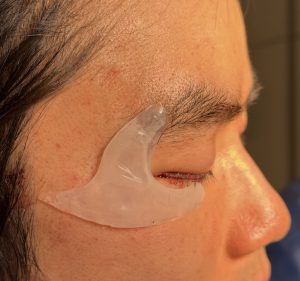Background: Cheek augmentation historically is a a fairly uniform facial augmentation concept using standard implants. But contemporary cheek augmentation is a much more diverse form of midface augmentation due to the use of custom facial implant designs. Anatomically the cheek is a mixed bone and soft tissue area of the midface but it also connects to the orbit bones and is best judged as an aesthetic composite unit. While the cheek and orbital area can be augmented separately they are often better done together and this is a frequently overlooked approach. (As there is not standard implant that does so.
The most common upper composite cheek and orbital custom augmentation is the infraorbital-malar (IOM) implant. This implant style not only creates the high cheekbone look because of its posterior zygomatic arch extension but it also crosses the infraorbital rim to improve undereye hollows with an anterior extension. Geometrically this implant style creates a horizontal line of augmentation across the flat or convex upper midface.
Another unique style of custom midface implant is the tripod cheek implant which has three often equal in length legs. Centered over the cheek bone this implant style has extensions not only out into the zygomatic arch and infraorbital rim but also up along the lateral orbital rim. The question of course then becomes who would benefit from such an implant style.
Case Study: This Asian male desired a unique type of cheek augmentation. He previously had Bimax surgery. He felt his cheeks lacked projection but they were already wide which is consistent with his ethnicity. A high cheek augmentation was needed but it also had to blend into the rest of the orbit to look natural.
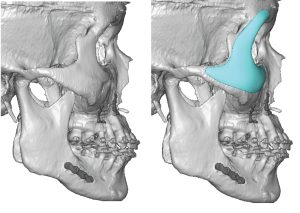
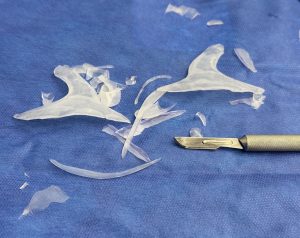
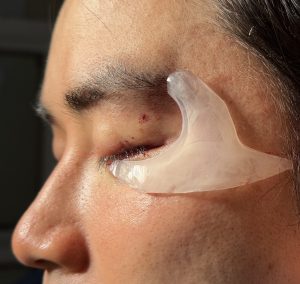
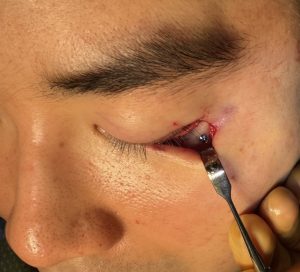
To augment the lower corner of the eye and cheek for a specific type of cheek augmentation to pull this small part of the face forward it takes a unique shape to do so. In some ways it is very reminiscent of a ZMC facial fracture which occurs because these areas are skeletally connected hence the term ZMC or tripod fracture.
Key Points:
1) The tripod custom cheek implant provides a unique three-dimensional augmentation of the ZMC facial area.
2) The patient who benefits most has a natural cheek flattening somewhat somewhat similar to a ZMC fracture pattern.
3) The custom tripod cheek implant can be inserted through the lower eyelid incision.
Dr. Barry Eppley
World-Renowned Plastic Surgeon

